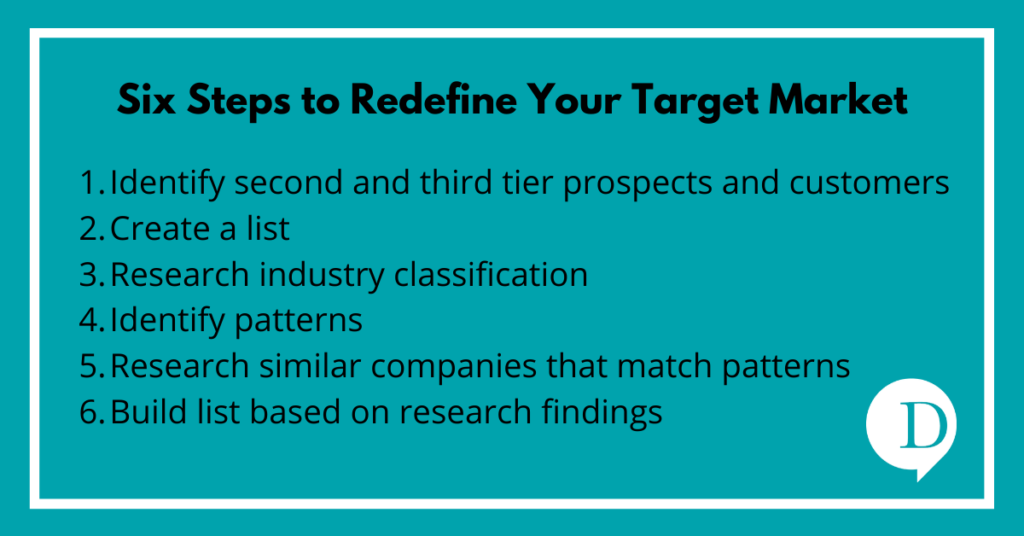Part 2
As B2B marketers, business developers, and salespeople, it’s our responsibility to keep the sales pipeline full of prospects. This is no easy feat and takes a lot of hard work. When the flow of word-of-mouth leads and referrals runs dry, where do you go? How do you define your target market and find businesses that can become your future prospects?

Last week, we discussed the two ways to approach this question – the method that will be the best fit for your company depends on your starting point.
- Starting Point #1: You have a list of current and/or past customers AND you want to continue selling to customers who are similar.
- Starting Point #2: You are starting from scratch. This means, you do not have a list of current and/or past customers OR you have a list, but you do not want to reach this group, instead, you want to target a new segment.
If Starting Point #1 sounds like a fit for you, go back and read this post.
Maybe you’re just starting out. Or maybe your goal is to grow by breaking into a new segment. If so, Option 2 is for you. Arguably, this route can feel very intimidating. But, if you apply the same three data points we reviewed last week, geography, industry, and size, you can easily conquer identifying your target market.
Here’s how to use geography, industry, and size when you’re starting from scratch.
- Geography – can be defined by state, city, county, zip code, or even neighborhood
- When you’re starting with a clean slate, it is easy to think “everyone is my prospect”. And while that might be the case, it is not an attainable lead generation tactic. You need to have a starting point, or an “A List”. If you put your blinders on and start thinking realistically, geographically, where will your first buyers come from? Often, they come from your own backyard – or neighborhood, county, city, state, etc.
- Industry
- Start by filtering out industries you know you do not want to work inside of – examples include competitors and non-fits. For example, if you’re a business banker, you would want to filter out other banks.
- Next, brainstorm the industries that are good-fits. This is where you’ll start finding your target industries. For example, if you sell industrial kitchen equipment, you will want to include industries such as restaurants, hotels, senior living facilities, hospitals, etc.
- Size – can be defined by employee count, revenue ranges, or physical square-footage
- This is where you begin zeroing in and really start identifying your target market. There are multiple ways to define the size of a company – depending on your product or service, we suggest using either employee count, annualized revenue, or square-footage – sometimes, a combination of the three. For example, if you sell on-site fueling services, there’s probably a minimum number of gallons you want to fill on each site – you can use employee count to gauge the number of cars on site, which will give you an approximate number of gallons. Or, if you’re a commercial roofer, you would look at square-footage to determine buildings that have roofs that are in the size-range you want to do business with.
Whether you’re starting from scratch or have hundreds of existing customers, you can identify your target market. By using geography, industry, and size, you will be well on your way to your next selling opportunity!




